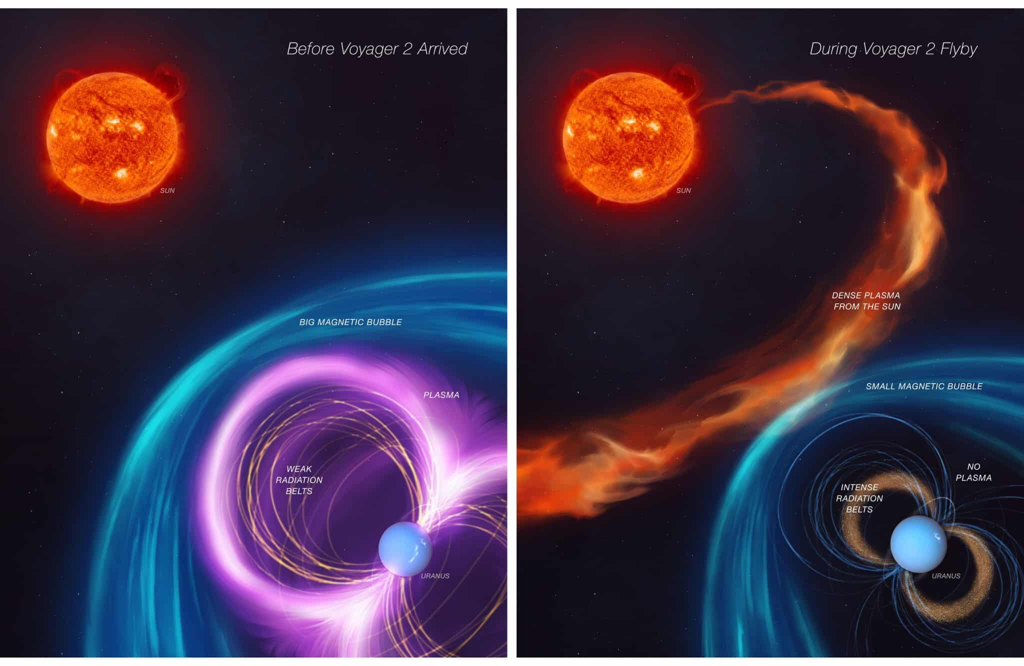Astronomers have questioned the unusual nature of Uranus' magnetic field.
The "Voyager 2" probe, launched almost simultaneously with its "twin brother" in 1977, flew approximately 80,000 kilometers from Uranus eight years later, collecting so much invaluable information in just a few hours that it is still being studied today. One of the most fascinating discoveries at that time was the peculiar magnetic field of this planet.
Firstly, it was found to be tilted by a full 59 degrees relative to Uranus's rotation axis. On Earth, magnetic poles do not align with geographic ones, but there is still a rough correspondence. Secondly, the center of Uranus's magnetic field is also located far from its core. According to scientists, this is because it is not generated by the planet's core, as is the case on Earth, but by layers of conductive material at relatively shallow depths. Finally, the composition of the magnetosphere turned out to be extremely unusual: there was very little of the expected charged plasma, and instead, the radiation belts were simply "packed" with electrons.
Recently, plasma physics researcher Jamie Yasinski from NASA's Jet Propulsion Laboratory revisited this entire picture with colleagues. In a recent article published in the journal Nature Astronomy, the scientists shared intriguing findings: they believe that during the "Voyager" flyby, Uranus's magnetosphere was not in its usual state. Although the probe's flyby occurred during a solar minimum, on that particular day, it seems that Uranus was subjected to an intensified attack from the solar wind — a stream of particles from our parent star.

For example, researchers found that two days before the flyby, the density of the solar wind around Uranus sharply increased. When the probe reached the boundary of the planet's magnetosphere — the so-called magnetopause — it was found to be positioned very low. Physicists suspect that at that moment, some sudden solar event "compressed" the magnetosphere of the icy giant, altering its composition and overall configuration. The plasma was temporarily "blown away" by the solar wind, "pushed" closer to the planet, which is why the probe did not detect it. Meanwhile, observations of Earth's magnetic field and those of other planets indicate that in such cases, the upper layers of the magnetosphere begin to fill with lighter particles — electrons.
The scientists also suggested that under the "impact" of solar material, the magnetic field lines were reconnecting. If "Voyager" had arrived at Uranus just a week earlier, it would have encountered a completely different scenario, according to Jamie Yasinski.
These conclusions prompted a reevaluation not only of the "inner world" of the distant planet but also of the chances of discovering subsurface oceans on some of its moons. Since liquid water is a good conductor of electricity, its presence within Uranus's moons would undoubtedly reveal itself through its magnetosphere.
The data from "Voyager" have almost dashed hopes of verifying this with Titania and Oberon, although they are considered promising candidates: they are located farther away from other large moons and were thought to be at the very edges of Uranus's magnetic field. Now, physicists have emphasized that in reality, both Titania and Oberon are most often located within the planet's magnetosphere, and they were only temporarily outside its "territory" in 1986.